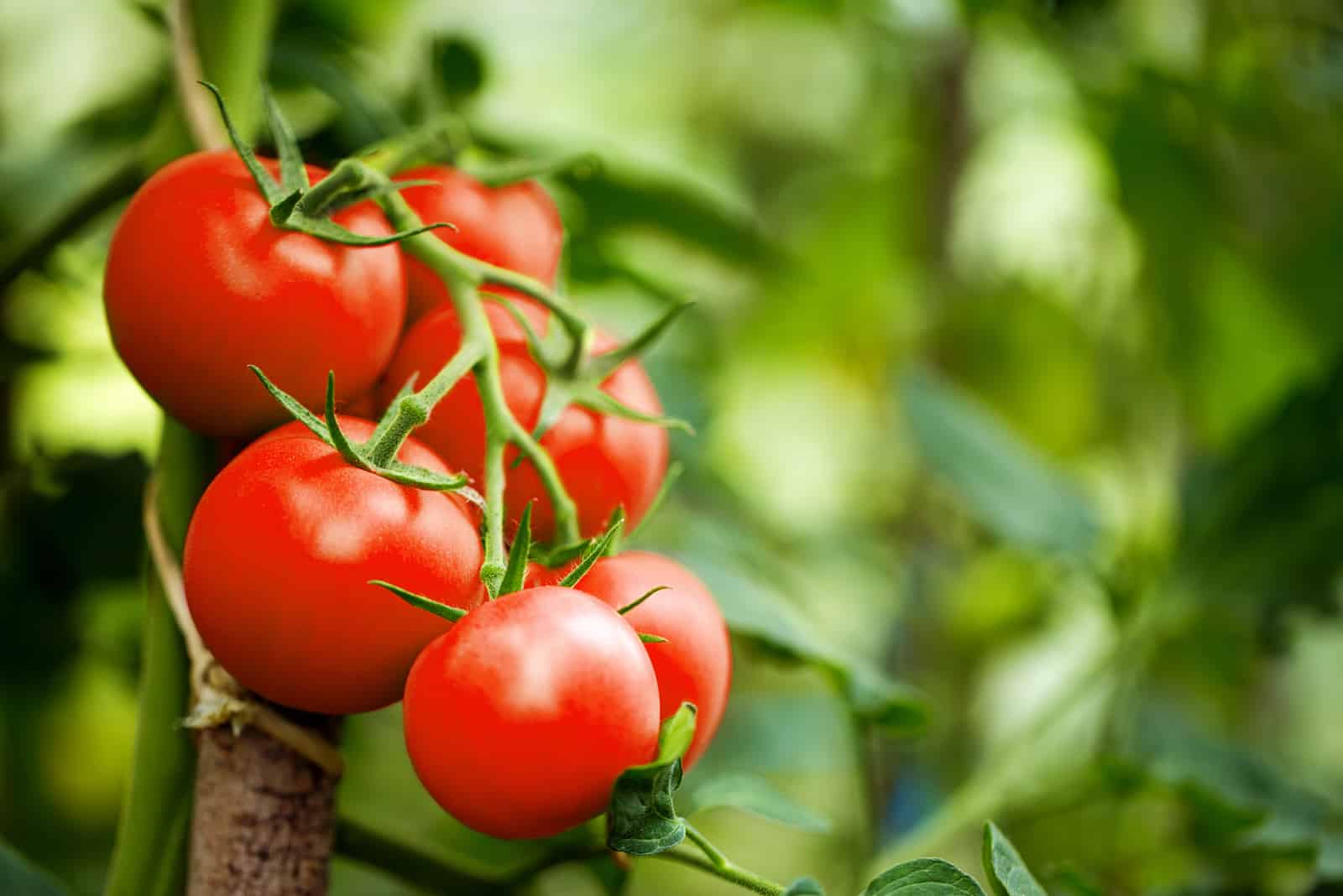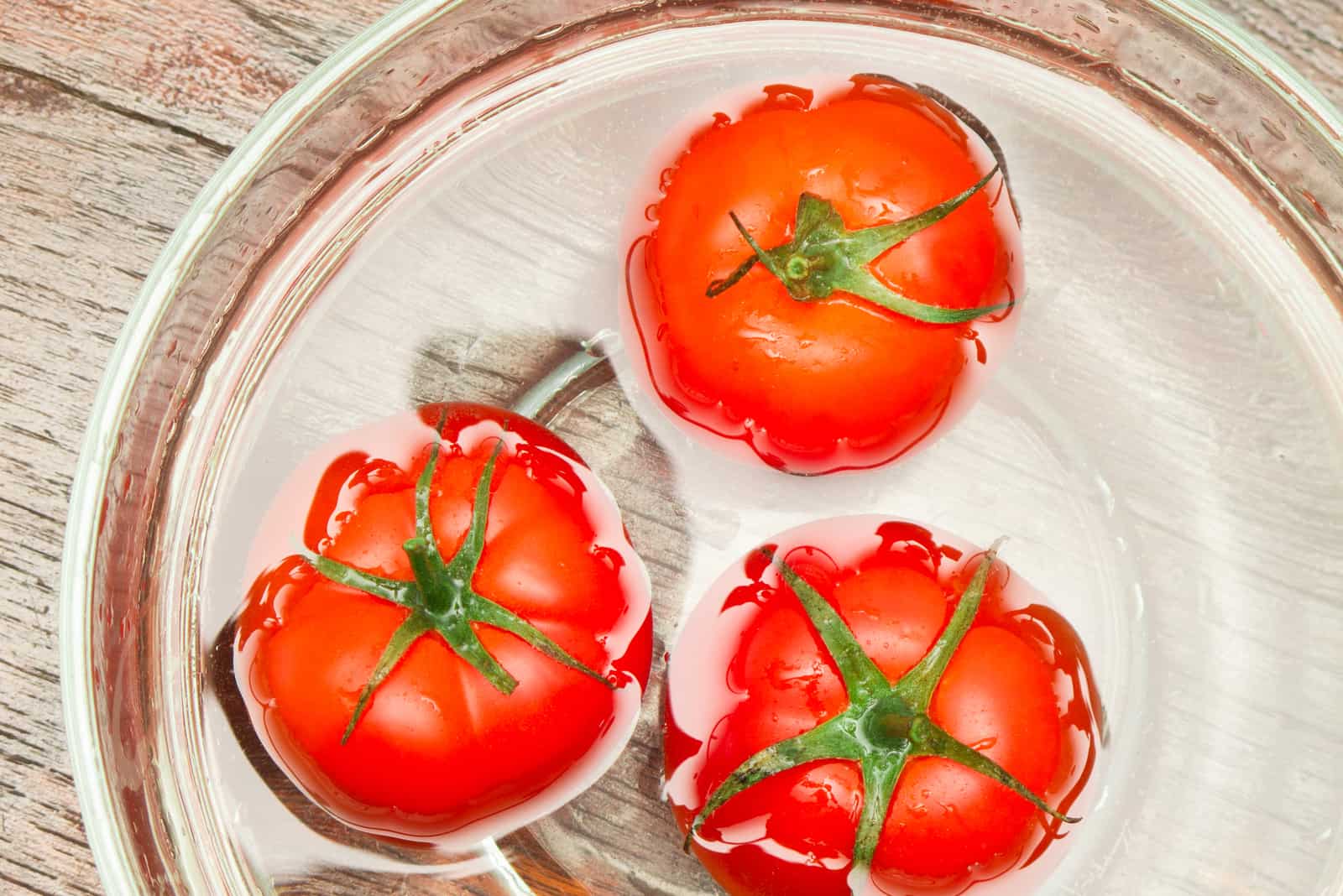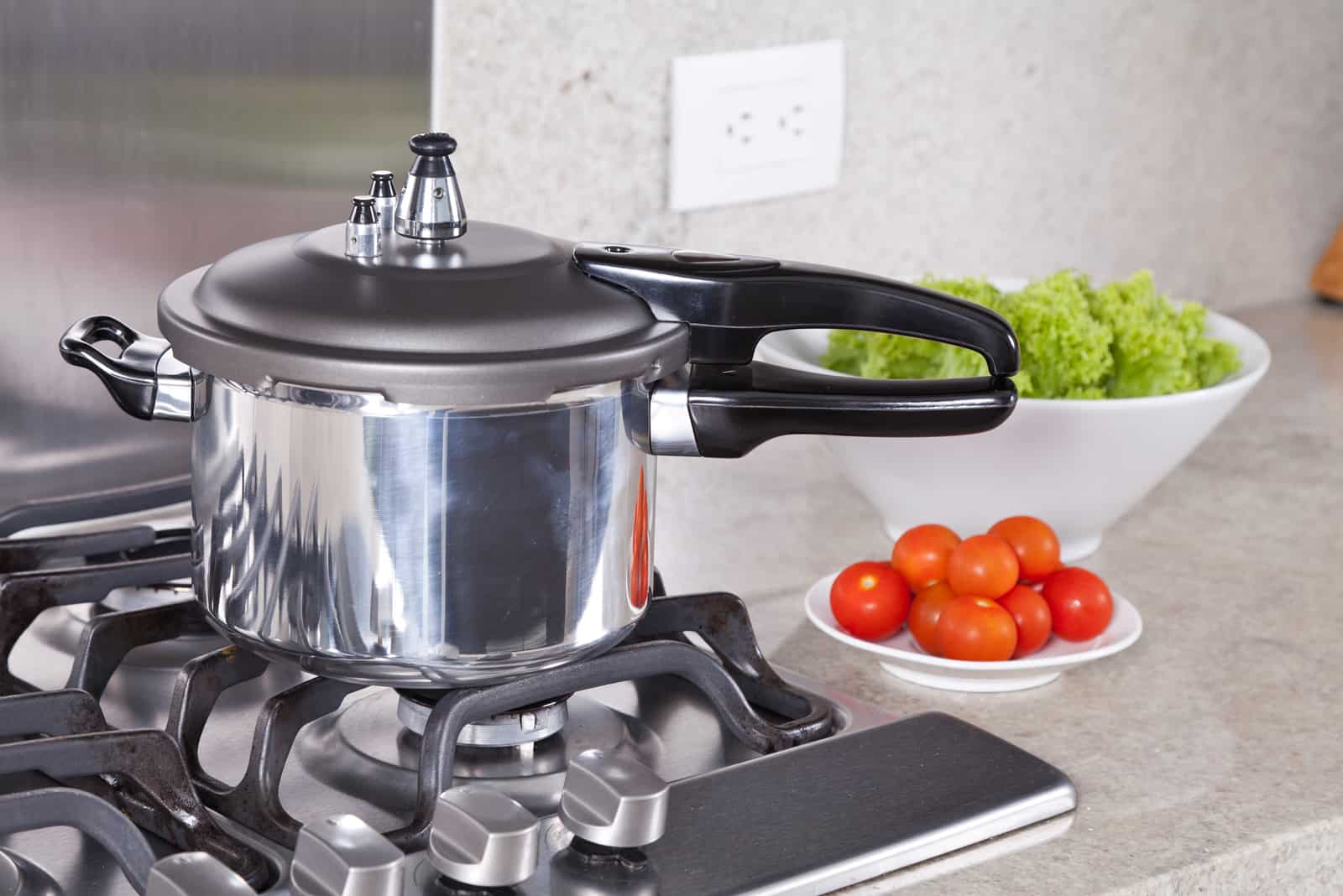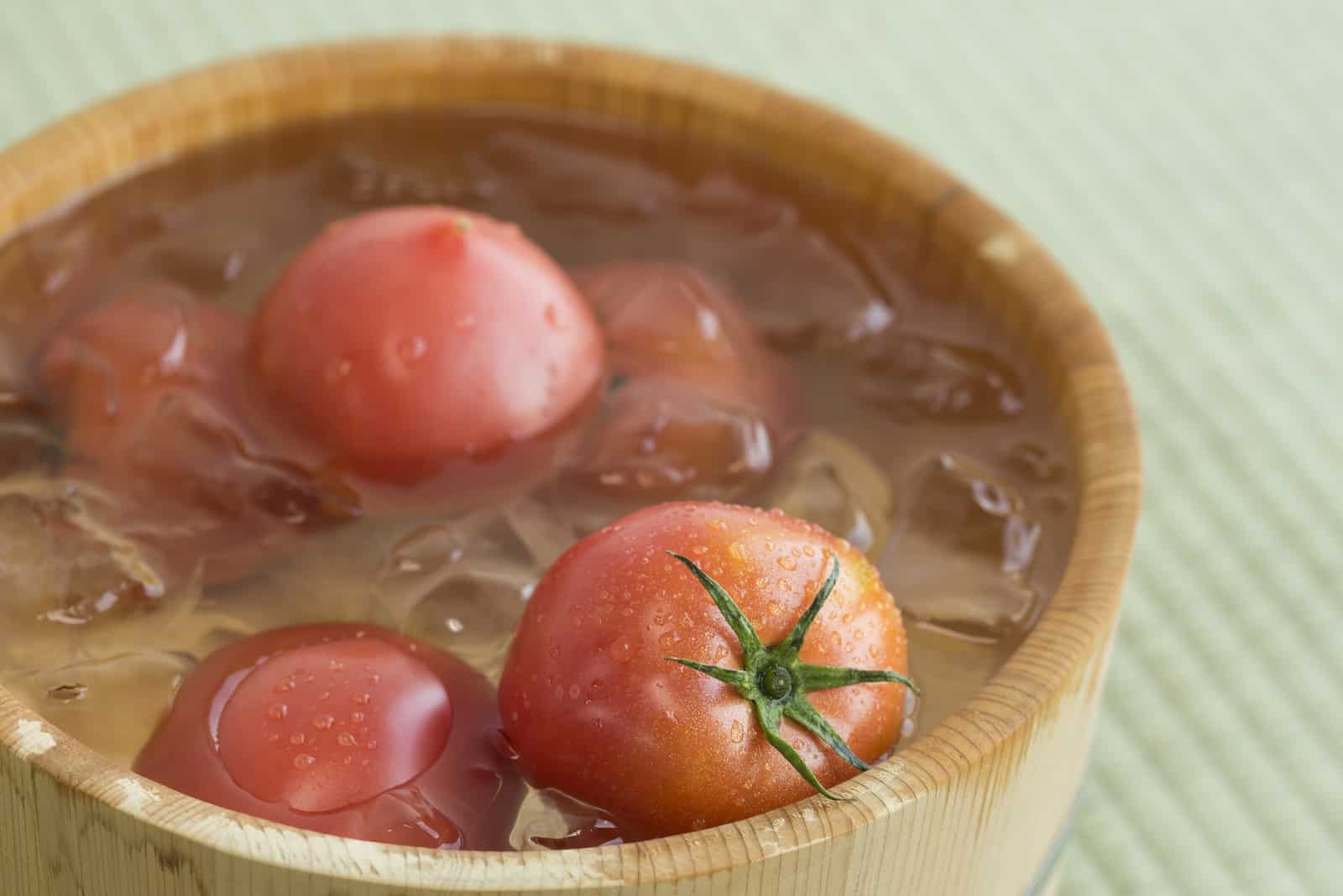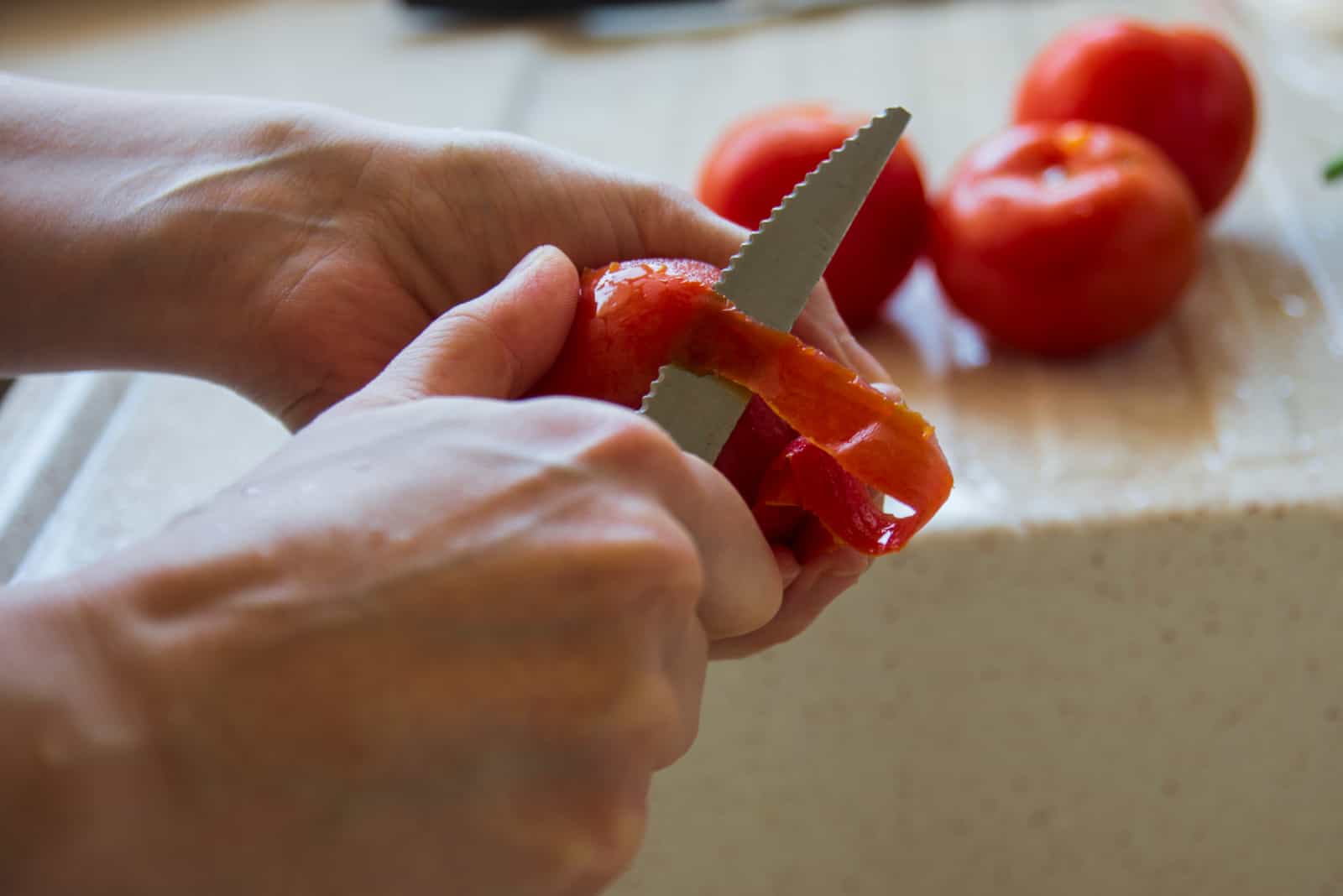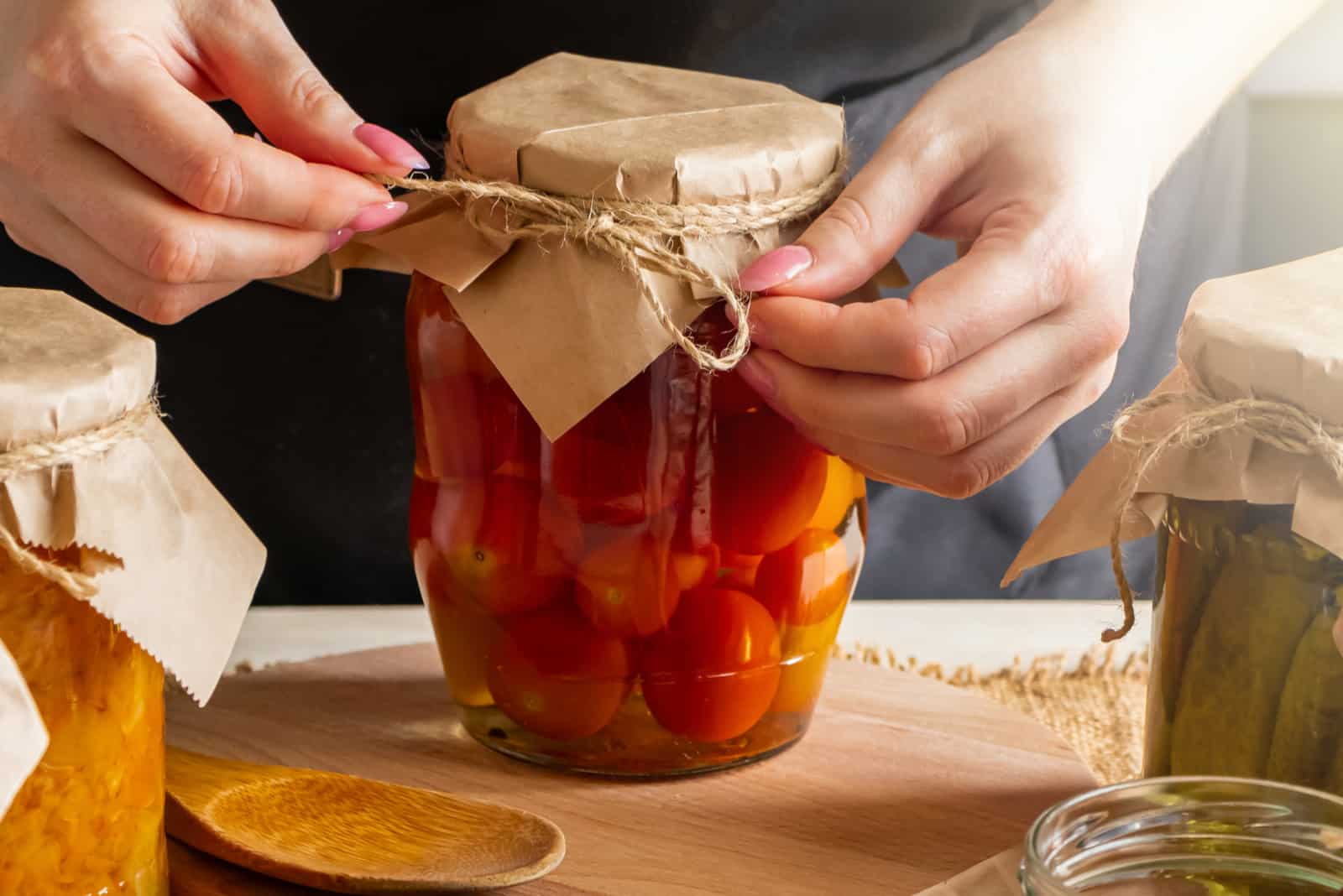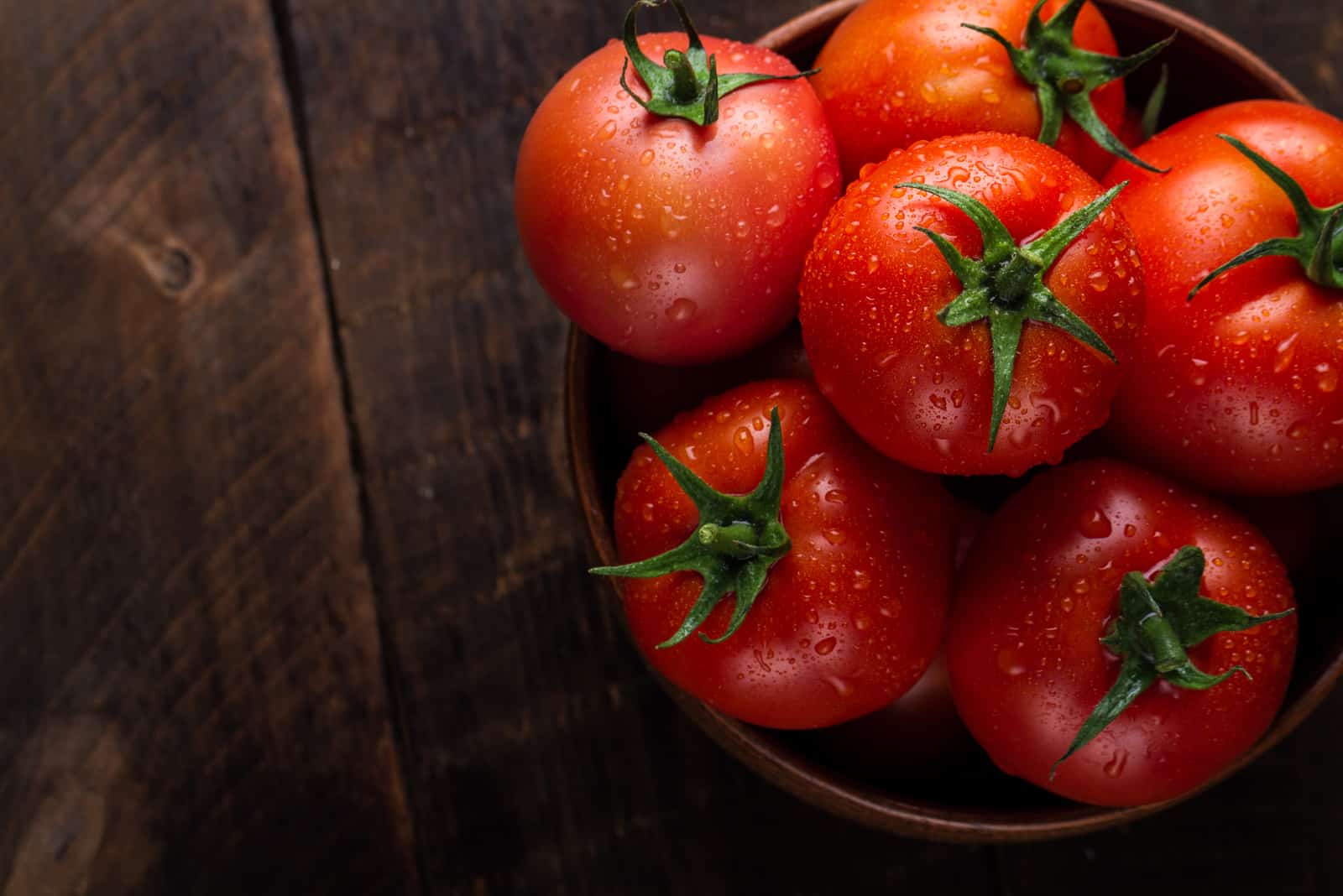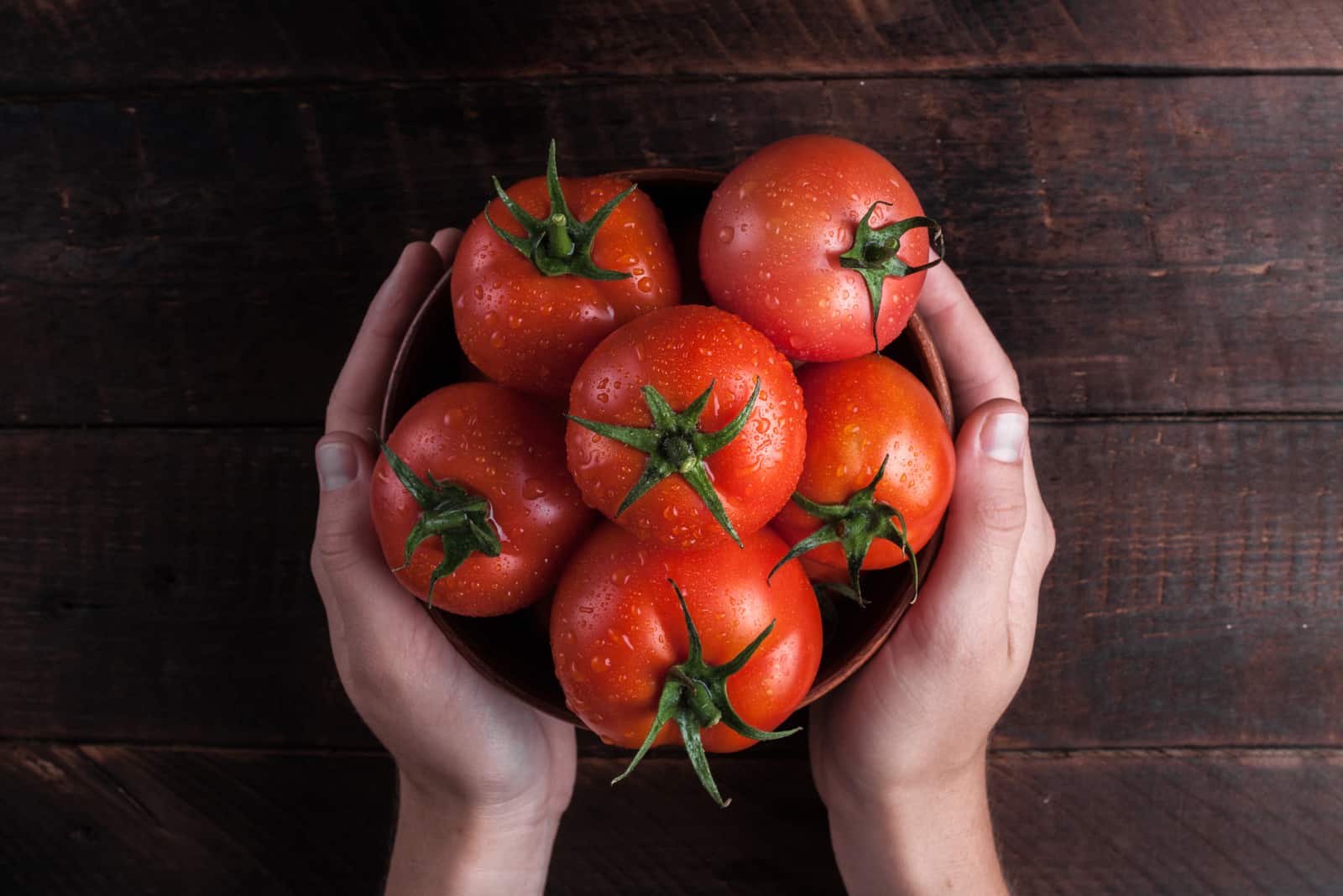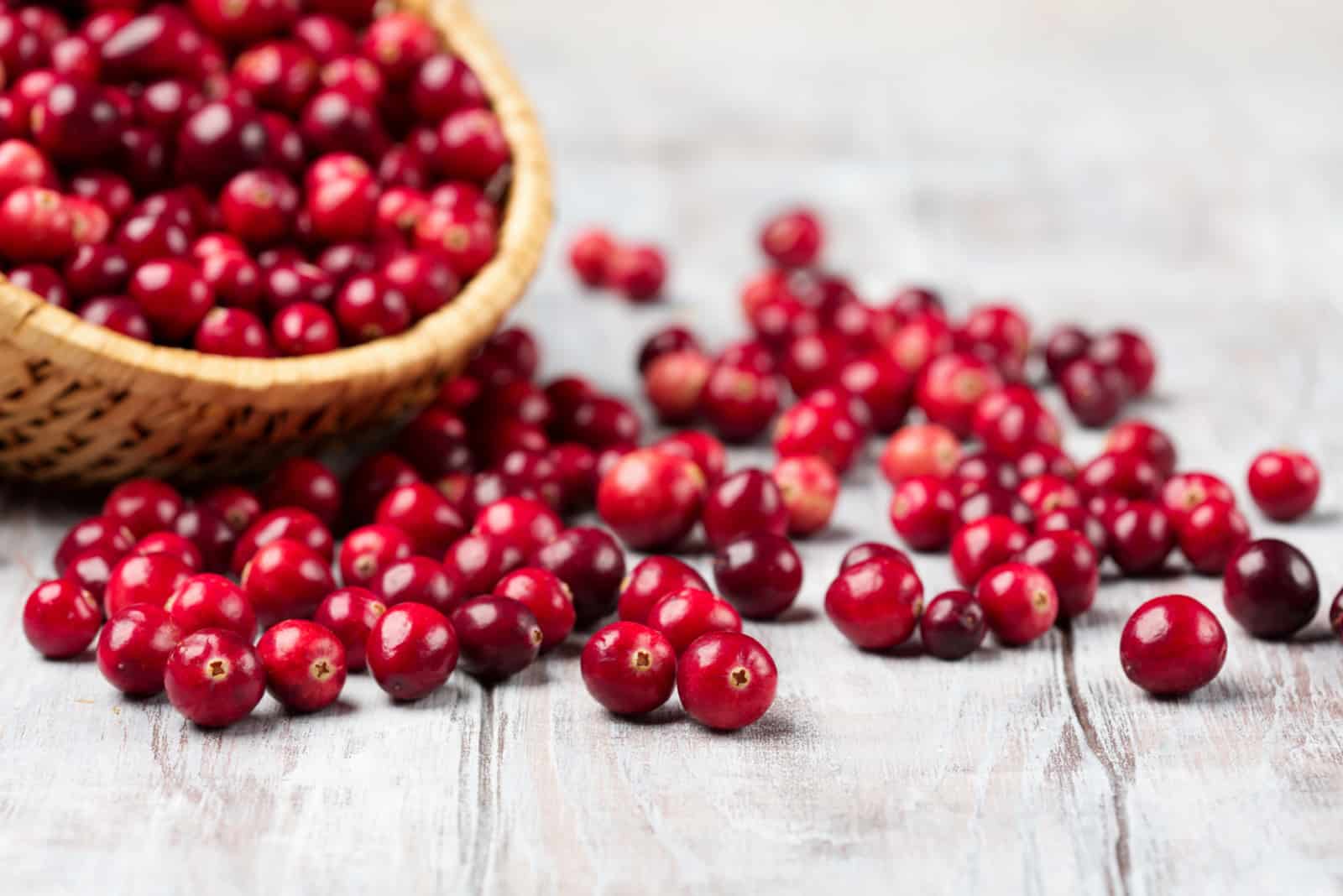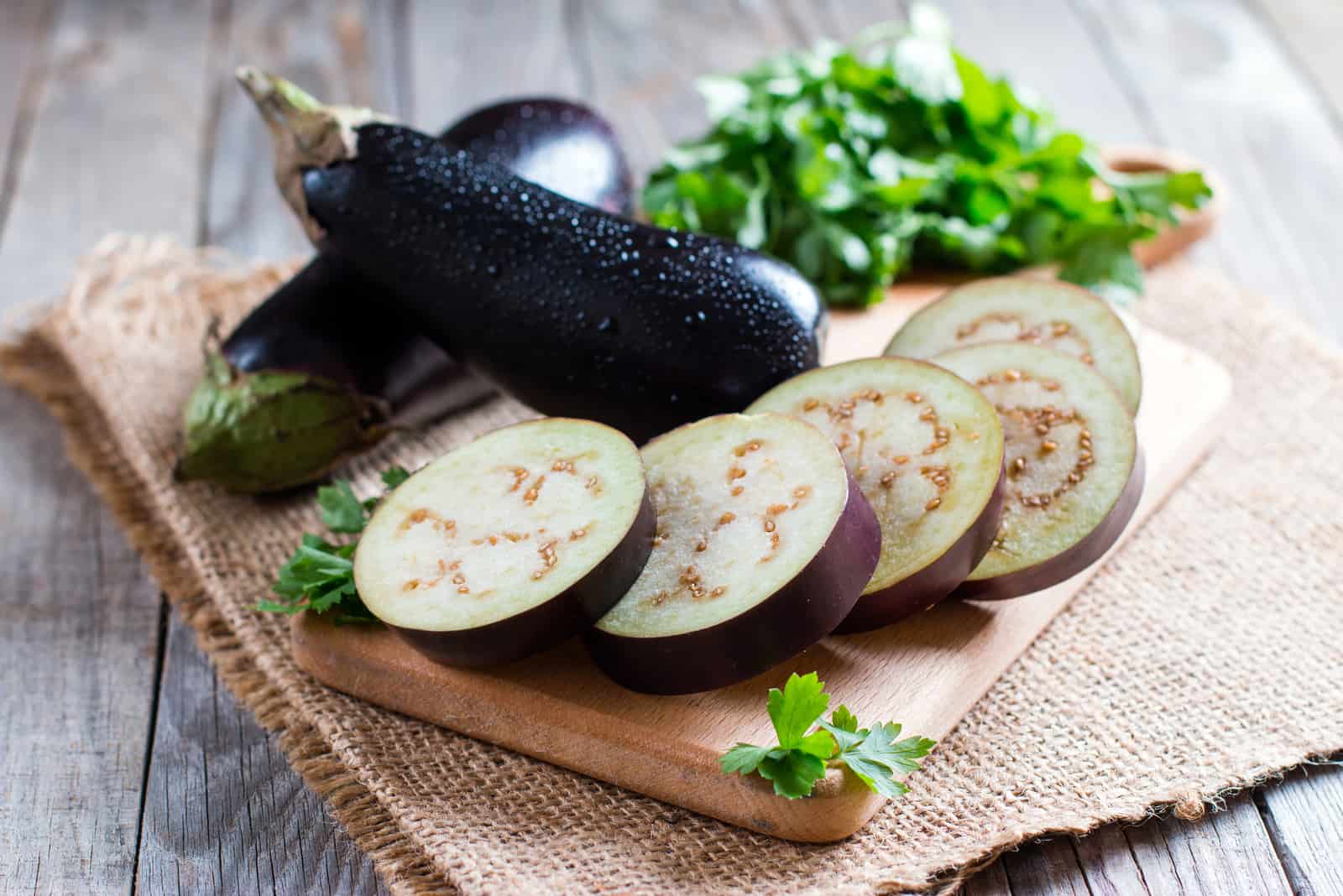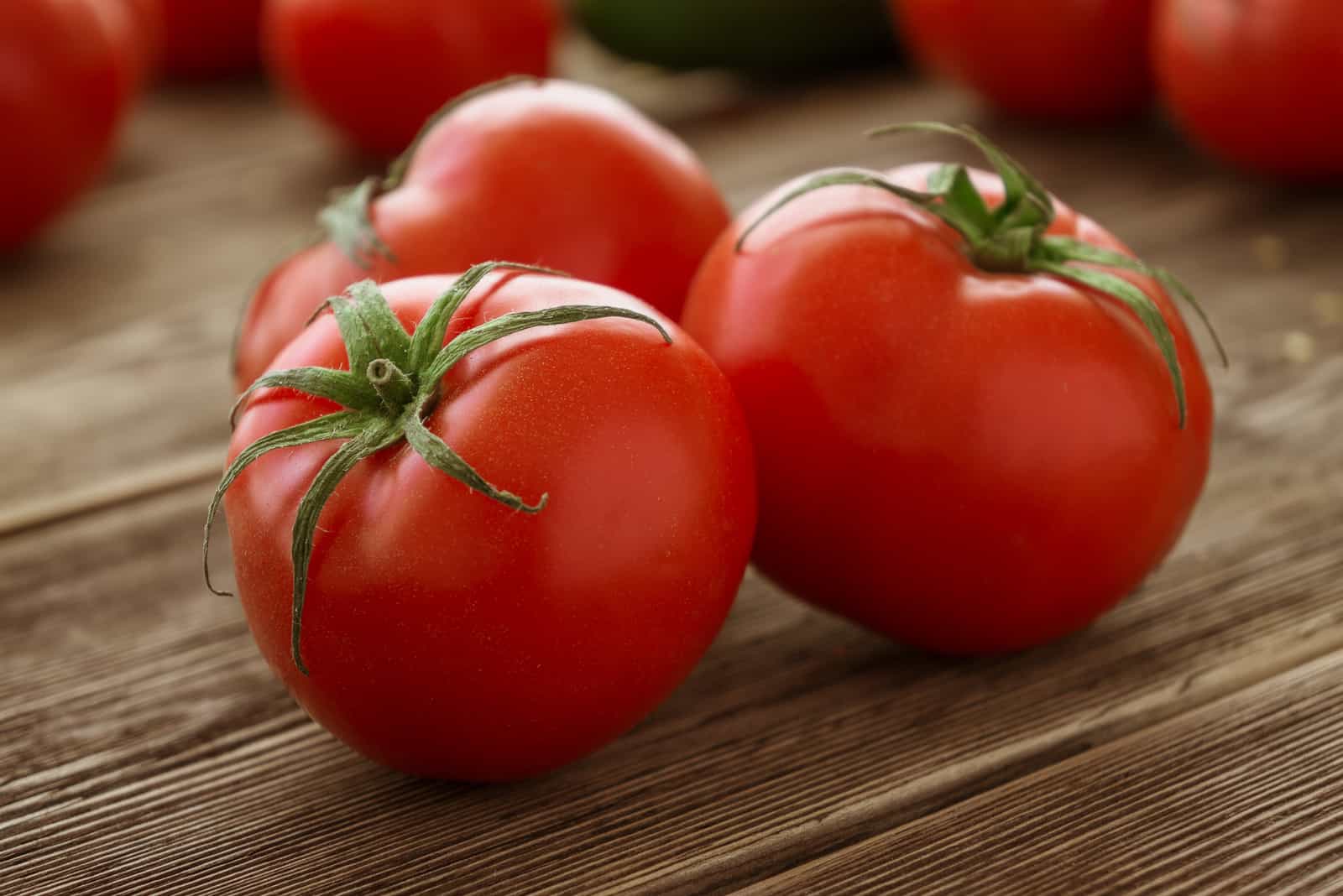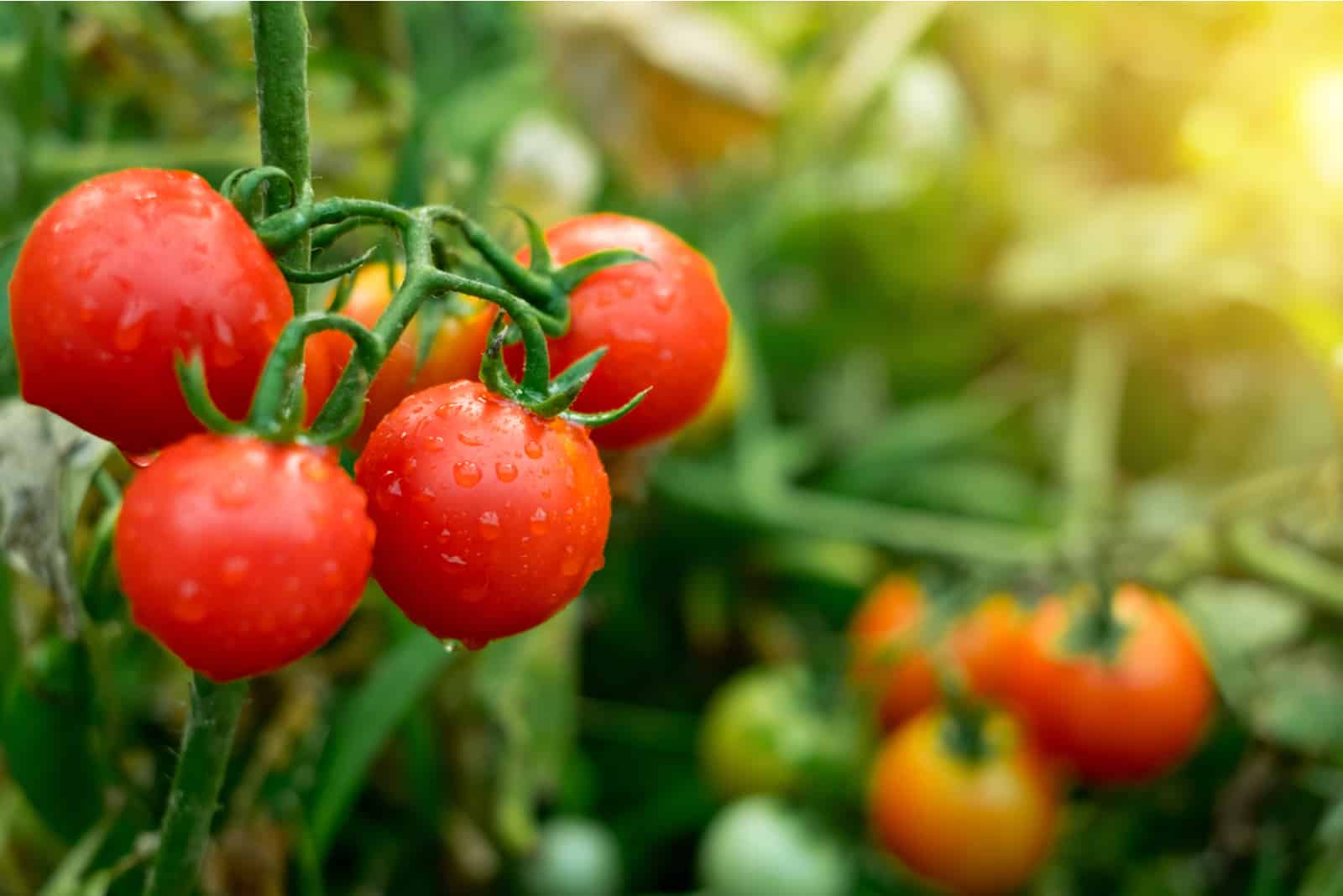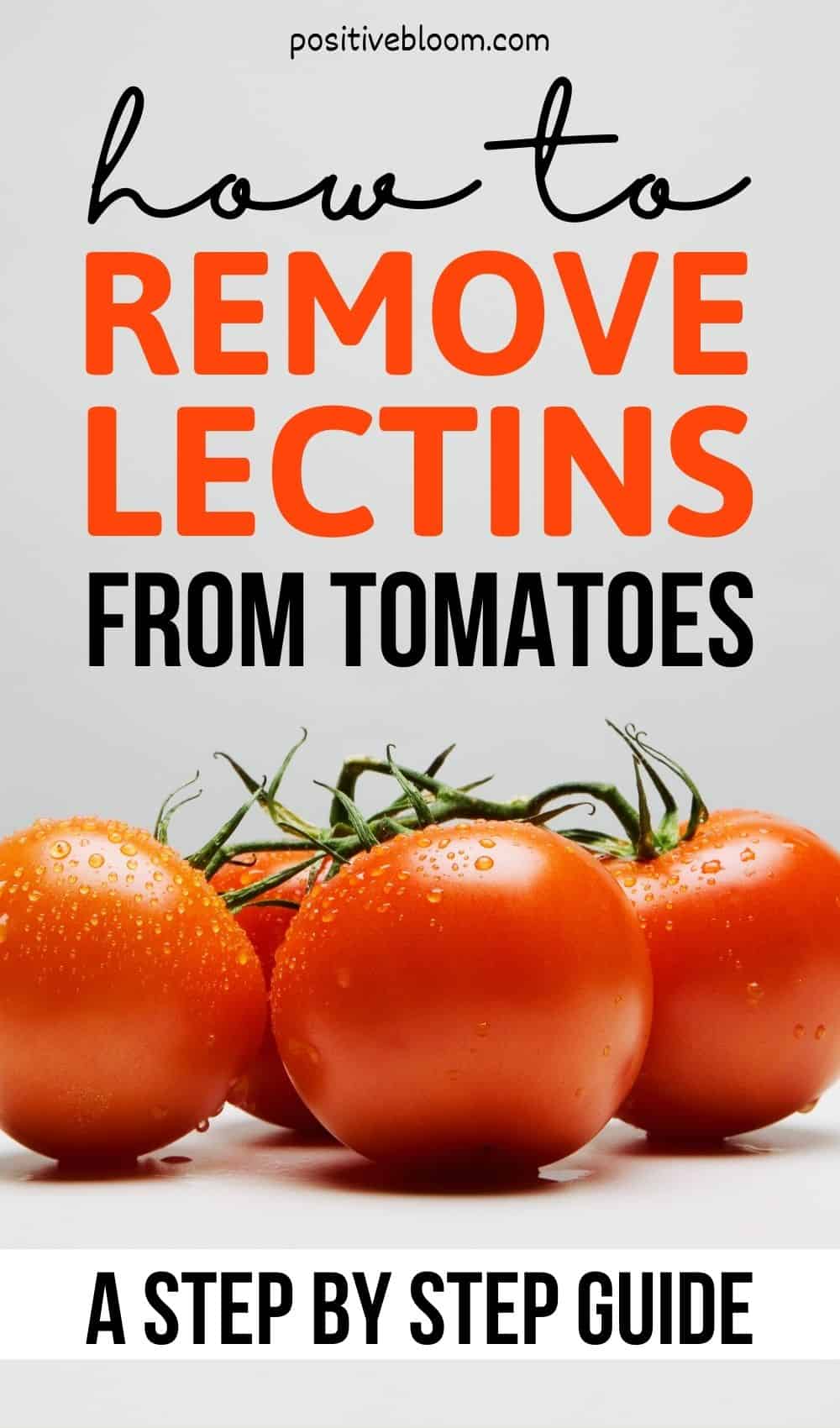Tomatoes are definitely on my top-five list of favorite foods. I would add tomatoes to every meal if I could! When I think of food in general (and I think about it a lot), tomatoes are always at the forefront of my mind.
A little while ago, I found out that tomatoes contain lectins, which should be avoided. A dozen articles popped up when I started research on the topic, and each piece suggested removing lectins before consuming.
Now, I want to share my research with you to help you learn how to remove lectins from tomatoes.
In addition to that, I will also share some other things related to lectins with you.
Let’s get into details.
How To Remove Lectins From Tomatoes In 5 Steps
Although it sounds a bit strange, and maybe even difficult, there are some natural ways to remove lectins from tomatoes.
Fortunately, tomatoes don’t contain many lectins, so their removal shouldn’t be too much of a problem.
There are five easy and successful methods for getting rid of lectins.
The methods include soaking, cooking, peeling and deseeding, fermenting, and temperature shock.
Read on to find out more.
1. Soak The Tomatoes
This is actually an old method of removing these proteins from tomatoes, or tomatoes sauce if you prefer.
Before scientists ever researched lectins, our grandparents knew about the decreased ability to digest certain food. Of course, they didn’t know about lectins in particular, but rather about the adverse effects they have on the digestive system.
You may have seen older people soaking their vegetables before cooking. They didn’t only wash tomatoes, but also other groceries like beans or grains.
To remove lectins from tomatoes, first soak them in water.
2. Use A Pressure Cooker
After you soak the tomatoes, prepare a pressure cooker.
This step can be applied to most vegetables that contain lectins. If you haven’t tried pressure cooking by now, I recommend that you purchase and use this kind of pot regularly.
The tomatoes should be boiled at a high temperature for 10 minutes.
In the past, pressure cookers were hard to handle and often avoided as a result.
Nowadays there are lots of different pressure cookers that are both affordable and safe, so there’s no reason not to use one.
3. Instantly Cool Tomatoes
After boiling, put the pressure cooker in a sink full of cold water.
To make sure that the water is cold enough, put some ice cubes in it.
The ice bath will evoke temperature shock, which will remove many lectins.
Many use this method before freezing their vegetables. It has been proven that this is the best way to remove harmful proteins and keep healthy nutrients.
4. Peel And Deseed Tomatoes
Before we move on to the benefits of peeling and deseeding vegetables, let’s take a look at why it’s necessary. According to Dr. Steven Gundry, lectin-filled hull, peel, or rind are the most harmful parts of every plant as they contain high lectin content.
You can use two tools to remove lectins: a serrated peeler or a knife.
This is an effortless method for removing the skin from soft vegetables. You can also use a peeler for peaches, even if they are fully ripe. Don’t forget to boil tomatoes before peeling, as it will be challenging and probably messy.
After peeling, cut the tomatoes into halves and scoop out the seeds with a spoon.
The more seeds you remove, the less amount of lectins will remain.
Bear in mind that these proteins can’t be removed just by cooking. You should also peel them after.
Many suggest soaking the tomatoes in something acidic like vinegar or lemon juice. It hasn’t been proven that this helps with lectin removal, and to be honest, it just makes the fresh tomatoes taste bitter.
According to research, lectins are resistant to enzymes that digest proteins.
5. Ferment Tomatoes
This step isn’t necessary, but it’s valuable. As seeds contain the most significant amount of lectins, you should remove them.
Fermenting tomatoes will allow all the beneficial bacteria to break down. It will convert almost every plant food’s defensive, but also damaging, substances.
This is one of the reasons so many cultures consume as much fermented food as they can.
Fermentation, as with every other way of removing lectins from tomatoes, won’t give you completely lectin-free tomatoes. But, as the concentration decreases, the harmful effect of lectins reduces.
What Are Lectins
Now you know how to remove lectins from tomatoes, let’s find out what lectin actually is.
Lectins are types of proteins, precisely carbohydrate-binding proteins.
Carbohydrate-binding proteins bind with sugar, formulating the structure. It’s an essential mechanism in plants. Their job is to develop immunity to help the plants fight against different diseases and pests.
Many plants contain lectins, such as vegetables and legumes. So, how can we consume lectin-containing vegetables or legumes if they are harmful?
Well, lectins won’t cause you much trouble unless you are allergic to them.
Lectins are harmful in that they are not easily digested, and as such can cause some issues.
What Do Lectins Do To The Body?
Now that you know how to remove lectins from tomatoes, let’s discuss exactly what lectins do to our bodies.
The following information may be scary, but it’s important to know. Removing lectins from tomatoes and other food will improve your diet by leaving only the beneficial nutrients behind.
The problem is that this kind of protein suppresses the absorption of nutrients, leading to nutrition deficiency.
Now let’s look at the different diseases and issues lectins may cause.
Autoimmune disease: Rheumatoid Arthritis
According to studies, the interaction between lectins and enterocytes/lymphocytes can translocate dietary and gut-derived pathological antigens.
They translocate to peripheral tissues and cause antigenic stimulation.
If you have genetic predispositions for susceptibility to antigenic stimulation, it will result in Rheumatoid Arthritis.
Although this may sound confusing, remember that you have to consider genetics to create your diet.
See more about lectins and Rheumatoid Arthritis here.
Gastrointestinal Issues
As lectins are hard to digest, specific issues may occur.
Gastrointestinal issues caused by lectins are:
• Nausea
• Diarrhea
• Bloating
These problems primarily affect older people who have weak immune systems.
Leaky Gut Syndrome
The Plant Paradox diet, created by Dr. Steven Gundry, suggests that gastrointestinal issues may lead to leaky gut syndrome.
The diet should be balanced as specific inflammatory issues can cause weight loss or weight gain (obesity).
Some research has shown the connection between lectins and heart disease.
Although many diseases and issues are connected to lectins, bear in mind that those issues can only be caused by high concentrations of lectin content.
The key is, once again, a healthy and balanced diet.
What is lectin blocking?
Lectin blocking is a method of neutralizing lectins within the body by using particular foods or food supplements.
I will concentrate on the natural ways of blocking this kind of protein using particular foods.
What foods neutralize lectins?
Here is a list of 5 natural blockers.
1. Cranberries – These powerful antioxidants bind to lectins and help the body absorb them efficiently. Add some cranberry smoothies to your diet. Other fruits that block this protein are oranges, blueberries, and peaches.
2. Okra – It binds these proteins and prevents inflammatory issues.
3. Crustaceans – This delicious seafood binds lectins in wheat and prevents inflammation of joints.
4. Bladderwrack Seaweed – This food prevents lectins from causing any harm to our bodies. It has many health benefits.
5. Kiwi – It contains sialic acid and prevents these types of protein from causing issues in the digestive tract.
Include these foods in your diet to minimize the harmful effects of lectin.
Other Foods That Contain Lectins
If you decide to go on a lectin-free diet, bear in mind that some foods have a high amount of lectins.
• Legumes, including red kidney beans, lentils, peas, soybeans, and peanuts.
• Nightshade vegetables such as eggplants, potatoes, peppers, and tomatoes.
• Dairy products, including milk.
• Grains such as quinoa, barley, and rice.
• Corn-fed meat.
How To Remove Lectins From Food
We told you how to remove lectins from tomatoes, but now let’s look at how to remove them from other vegetables.
As beans and legumes are lectin-rich foods, let’s see how to remove this kind of protein from them.
Beans
• You should always wash beans before cooking. Not only is this a way to remove harmful proteins, but it also removes harmful preservatives that were used to protect the beans from pests and insects.
• Soak beans. You should soak the beans for approximately 6-10 hours, or leave them soaking overnight.
• Rewash them. This is another chance to get rid of harmful proteins on the surface. The number of lectins will reduce significantly after washing and soaking.
• Prepare an instant pot and let the beans cook on low heat for approximately one hour. Beans require cooking for 30 minutes minimum. There are 3 benefits of cooking beans: it removes harmful proteins, makes the beans more digestible, and also softens them. As the beans are more digestible after cooking or stewing, it will reduce gastric problems.
• Once again, you can ferment or sprout them. Fermenting beans for a few days will remove most of the lectins from them. Beans go well with pickles, and fermentation or sprouting will help them to reduce any harmful substances.
• Canned beans don’t contain lectins as they are already cooked.
Legumes
It has been proven that legumes contain a high amount of lectins. There are a couple of ways to remove this kind of protein from legumes.
• Washing: Just as with beans, legumes should be washed carefully as they can be dirty and impure.
• Roasting: Before cooking, slow roast the legumes for 3-5 minutes. This will reduce harmful proteins, but will also enhance the flavor. If you prefer frying, you can also do that.
• Boiling: Legumes should be boiled for 30-40 minutes minimum. This is actually necessary for every type of legume.
• Using spice: Turmeric powder is beneficial for removing lectins from foods. An interesting thing is that this method comes from ancient culinary traditions. Turmeric powder reduces this kind of protein and, when combined with legumes, has a lot of beneficial medical properties. Turmeric is an excellent spice to improve digestion.
Are There Any Benefits
A few years ago, it was believed that we should avoid lectins and beans altogether. This misconception has been debunked as many kinds of research have proven that avoiding lectins entirely is not necessary.
Although they are harmful to some extent, you shouldn’t exclude them completely.
The truth is that many of us won’t notice any harmful effects when consuming food rich in this type of protein. Their presence in beans can even reduce blood sugar and some cardiac problems.
They are also present in bean fiber, which balances digestion capacity and harmful effects.
They are good antioxidants, and as such improve the balancing of excess minerals that can damage proper fluid circulation.
They absorb excess carbs and regulate blood sugar levels. If some patients suffer from several cardiovascular diseases, consuming this kind of protein can be helpful.
Lectins And Diet
Considering both the harmful effects and benefits of lectins, there is no reason to completely exclude them from your diet.
This doesn’t apply to allergic or intolerant people to some extent. Like how some people need to eat gluten-free food, some should consume only lectin-free food.
Your diet should provide sufficient dietary fiber. Whole grains and vegetables from the nightshade family contain these fibers.
You can use coconut oil or olive oil if you are concerned about the harmful effects of these kinds of proteins.
My advice is that you shouldn’t give up consuming tomatoes entirely, unless you are allergic or intolerant.
What Should You Do If You Are Intolerant
The best advice is to consult with your doctor regularly. Now that you know everything about lectins, you can adjust your diet accordingly.
You will react differently to each food that contains lectins, which is why you should consult your doctor to see what you should be paying most attention to.
We’ve provided you with steps for removing lectins from tomatoes, so if you like tomato sauce as much as I do, now you can eat it!
Wrapping Up
As this article has taught you how to remove lectins from tomatoes, you shouldn’t have many problems with this type of protein in general.
Even though it’s considered harmful, you can balance your diet by removing or reducing this kind of protein.
In my opinion, it doesn’t matter what food you eat as long as you pay attention to the quality and quantity.
Until next time!
Like this post? Share or pin it for later!

